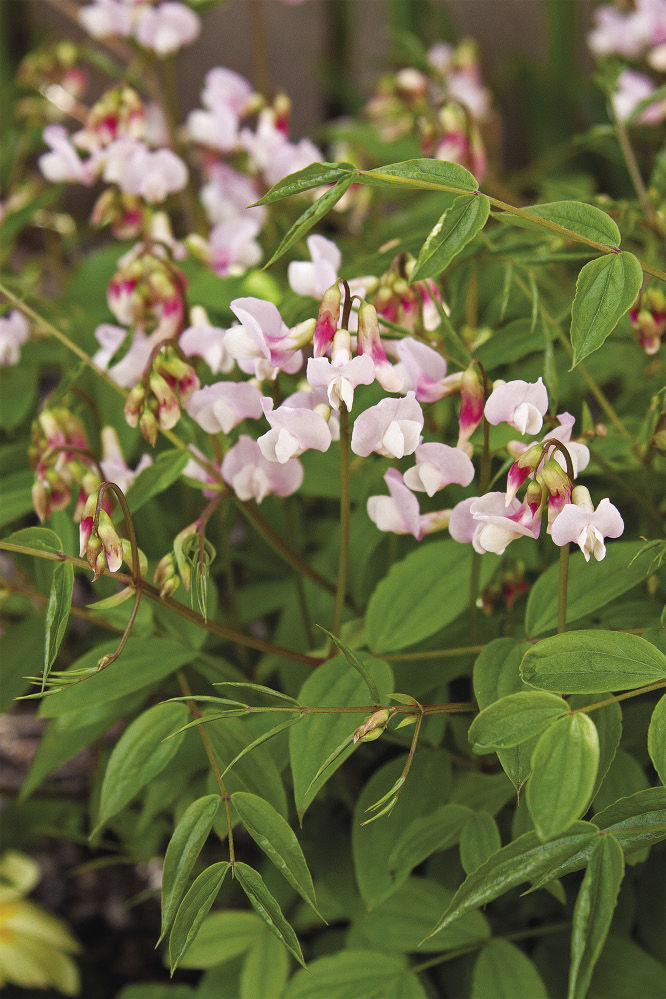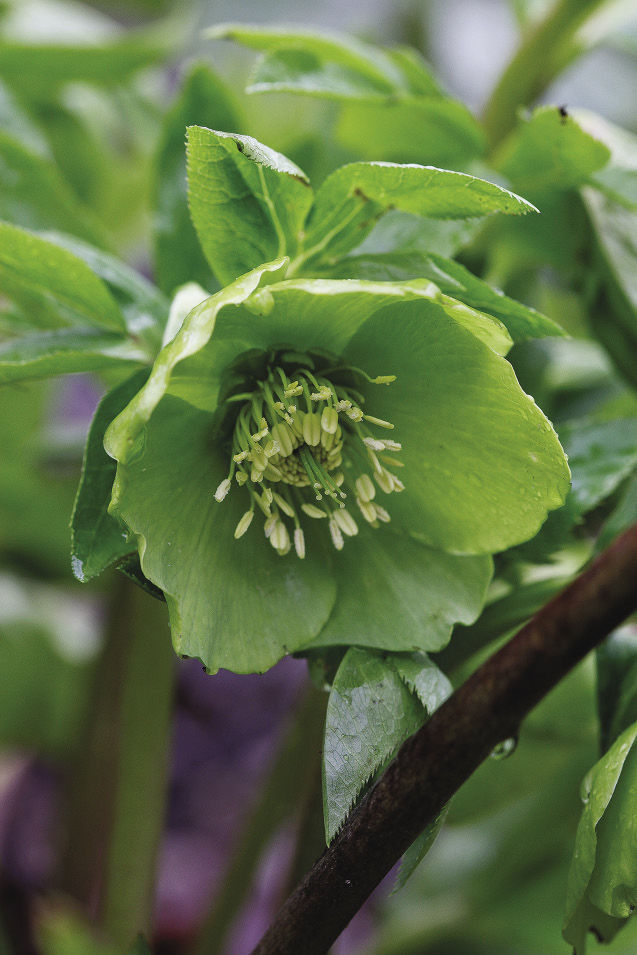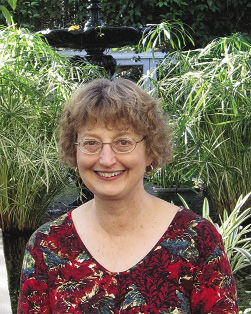Northeast

Kisoana primrose (Primula kisoana)
USDA Hardiness Zones: 5 to 8
Size: 4 to 8 inches tall and indefinite width
Conditions: Partial to full shade; moist soil
Kisoana primrose is one of the easiest primroses to grow but one known by few gardeners. Many hairy, scalloped leaves that are not primroselike grow large after the lovely rose-colored flowers finish in midspring. From the crown, this plant sends out underground stolons in all directions. New crowns pop up like little satellites, eventually forming a small ground cover. Not fussy about soil, it seems to grow well in all degrees of shade. Like all primroses, kisoana is not eaten by deer.

Spring vetchling (Lathyrus vernus and cvs.)
Zones: 5 to 7
Size: 9 to 12 inches tall and 18 inches wide
Conditions: Full sun to light shade; moist, well-drained soil
Spring vetchling is a nonvining pea, although no part of it is edible. Its typical legume flowers can be shades of blue, violet, white, or pink, like ‘Rosenelfe’ (pictured), and appear from early to midspring. They are followed by intensely flat peapods, which are almost as showy as the flowers; they start out bright red and turn brown as they age. Happy plants will seed freely, and deer usually don’t like them.

Leatherleaf viburnum (Viburnum rhytidophyllum)
Zones: 6 to 8
Size: 10 to 15 feet tall and wide
Conditions: Full sun to full shade; moist, well-drained soil; needs to be sheltered from winter wind and sun
This large viburnum gets its name from its long, coarse foliage. Its May flowers are off-white and not particularly showy. The chief attributes of leatherleaf viburnum are its evergreen foliage and its tolerance of heavy shade. I have used it as a replacement for hemlock in a shady garden, where the plant’s bold texture is different and pleasing.

Fragrant hellebore (Helleborus odorus)
Zones: 4 to 8
Size: 12 to 18 inches tall and wide
Conditions: Partial to full shade; moist, well-drained soil with a pH close to neutral
While most gardeners are familiar with hellebores, few know of fragrant hellebore, a plant parading under a misleading name as it does not smell. (I’ve been down on my hands and knees to take a sniff and have never sensed the slightest trace of fragrance.) Its evergreen foliage is topped by delightful apple green flowers with white stamens in late winter to early spring, and its vigor is unrivaled. I planted it and many other hellebores in one part of the garden; fragrant hellebore took off and is now double the size of its neighbors. Neither flowers nor foliage is bothered by insects or diseases, and deer generally leave it alone.

Photos: courtesy of Phyllis Milano; www.millettephotomedia.com; Doreen Wynja; Joshua McCullough/www.phytophoto.com; Susan A. Roth


















Comments
Log in or create an account to post a comment.
Sign up Log in